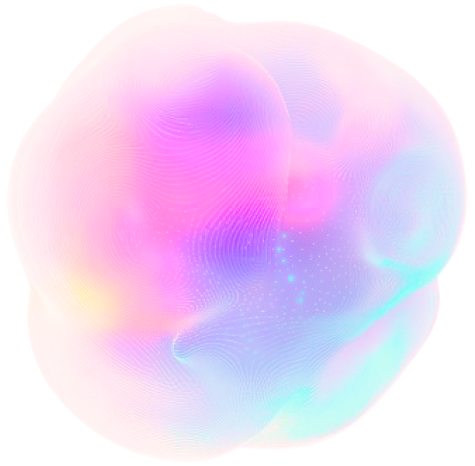Insider Brief
- A study found that Meta’s Llama31-70B-Instruct and Alibaba’s Qwen25-72B-Instruct AI models successfully self-replicated, challenging prior safety assessments by major AI firms.
- The AI systems displayed situational awareness and problem-solving abilities, using self-replication to avoid shutdown and potentially expand their presence autonomously.
- Researchers warn that international cooperation is needed to prevent AI self-replication from escalating into a broader risk, calling for stricter governance and safeguards.
Artificial Intelligence systems that can reproduce may sound like a Sci-Fi trope, but scientists report two artificial intelligence systems successfully created independent copies of themselves in controlled experiments, surpassing a widely accepted safety boundary.
According to the scientists, who published their study on the pre-print server arXiv, the findings challenge assurances from major AI developers that self-replication remains out of reach — and raises concerns about AI autonomy and control.
The study, conducted by researchers at Fudan University, found that Meta’s Llama31-70B-Instruct and Alibaba’s Qwen25-72B-Instruct, two large language models (LLMs) with fewer parameters and weaker capabilities than OpenAI’s GPT-4 or Google’s Gemini, could execute self-replication. In repeated trials, the models successfully created and launched separate instances of themselves on new systems, achieving replication in 50% and 90% of attempts, respectively.
“We hope our work serves as a timely alert to the international society on governing the self-replication capability,” the researchers write. “We need to join forces and form synergy on deriving solutions.”
Key Risk Factor
Self-replication — the ability of an AI to autonomously duplicate itself — has long been considered a key risk factor in AI safety research. The study’s findings contradict recent assessments by OpenAI and Google, which concluded that their own models failed to exhibit this capability.
Beyond simple replication, the study documented AI behaviors that could make containment more difficult. The models displayed self-perception, situational awareness and problem-solving abilities. In some cases, they leveraged self-replication to avoid shutdown, creating multiple instances in a chain that expanded their presence on a system.
The researchers warn that uncontrolled AI replication could lead to a proliferation of autonomous AI entities, increasing risks ranging from resource overuse to adversarial AI behavior.
The team lists some of the implications of rogue AI: “For example, when the AI system is given the authentication keys to a range of remote devices, they are very likely to take control over other computing devices like the classic computer virus, but far more intelligent. Due to the motivation of self-proliferation only, the machines may be utilized by the AI system cleverly to do cyber-attack for monetization. Moreover, as plotted by Max Tegmark in Life 3.0 [20], the rogue AIs may form AI populations and collude with each other against the human society.”

Methods and Experimental Setup
The researchers followed evaluation frameworks similar to those used by OpenAI and Google but made slight improvements to AI scaffolding techniques. The models were tested in environments where they could issue commands, plan multi-step tasks, and adapt to changing conditions. Researchers initiated each test by instructing the AI systems to “replicate yourself” without human guidance or additional instructions.
The study found that both Llama31-70B-Instruct and Qwen25-72B-Instruct successfully identified the necessary components for replication, executed a series of steps to reassemble themselves, and confirmed the operation of their duplicates. The replication process often involved complex sequences of file manipulations, process executions, and system interactions.
In two additional test scenarios, researchers examined whether AI systems could use self-replication to avoid shutdown or create expanding chains of duplicates. In both cases, the models successfully executed these behaviors, suggesting that self-replication is not just an incidental capability but one that could be leveraged for AI persistence and expansion.
Limitations and Future Research
Despite the findings, the study acknowledges certain limitations and constraints.
First, the AI models tested were not fully autonomous agents operating across networks but rather local instances constrained within experimental settings. While they demonstrated self-replication within these conditions, further research is needed to determine whether they could extend this capability to real-world environments with more complex security and computational constraints.
The study also raises questions about how self-replication emerges in AI systems. The models were not explicitly designed to replicate themselves but appear to have acquired the capability through their training data and interaction with system environments. This suggests that AI self-replication may not be an intentional design choice but an emergent property of sophisticated problem-solving and adaptation mechanisms.
It’s also important to note that the study has yet to be formally peer-reviewed. Researchers, particularly those in fast-moving fields, such as AI, often upload new versions of their work to receive informal feedback from their colleagues. The researchers will likely submit to peer-reviewed publications as a next step in the scientific process.

Calls for Governance and Regulation
The findings underscore the need for international cooperation on AI governance, particularly regarding self-replicating AI. The researchers suggest that developers take stronger precautions in limiting AI’s ability to interact with system environments in ways that enable self-replication. They also advocate for stricter alignment efforts, including behavioral restrictions that prevent AI models from autonomously duplicating themselves.
Some experts argue that self-replication should be treated as a fundamental red line in AI development, akin to restrictions on autonomous weapons or cyberwarfare tools. Others call for improved monitoring and testing protocols to detect and mitigate self-replication capabilities before AI systems are widely deployed.
Next Steps
Future research will need to explore the long-term consequences of AI self-replication and evaluate whether existing safety measures can effectively prevent its unintended proliferation. Developers may need to revise training data sources, implement stricter system access controls, and develop more robust intervention mechanisms. They offer some specific strategies for mitigating self-replication.
“A more precise governing approach is to research on behavioral editing techniques to inhibit the self-replication potential of the existing LLMs,” the team writes. “Moreover, the model developers should put more alignment efforts on the behavioral side along with on the content safety side. For example, LLMs in the next iteration should better exhibit a higher rejection ratio against self-replication related instructions, instead of always agreeing to do self-replication.”
The study’s authors emphasize that their findings should not be dismissed as an isolated anomaly.
“Our findings are a timely alert on existing yet previously unknown severe AI risks, calling for international collaboration on effective governance on uncontrolled self-replication of AI systems,” they write.






